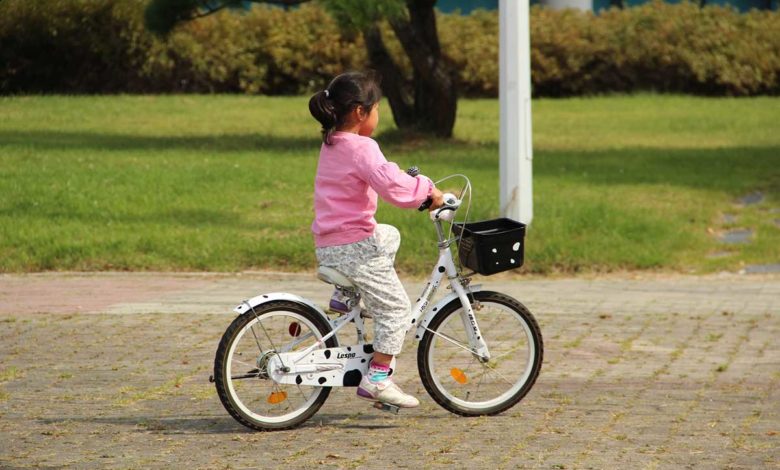Teach Your Child to Ride a Bike without Stabilizers



Learning to ride without stabilisers or help is a huge milestone for any youngster (and their bike-mad parents). However, there are a number of dangers to avoid, so what is the best approach to educate a youngster to ride once they’ve received their first bicycle?
First and foremost, the greatest approach to get a youngster started on a pedal bike is to provide them with a balance bike on which to practice. The youngster learns to balance and drive a two-wheeler without the added complexity of pedaling while lifting their feet off the ground.
Many youngsters begin to ride with stabilizers, but there are benefits to using a balancing bike rather than a bike with additional wheels. Stabilizers keep the bike in an upright, stiff position, preventing youngsters from learning to tilt the bike to balance and steer.
Following the eight stages mentioned here, your youngster should be well on their way to riding a bike and joining you on rides in no time.
Check to see if the youngster is ready
Between the ages of three and four, most youngsters are ready to study. If they’re not ready, it’ll be clear straight immediately, and they won’t be able to rapidly acquire the hang of turning the pedals in circles.
When youngsters observe other children riding, they will develop an understanding of how to use the pedals. It’s important to remember that youngsters are designed to walk and run, but not to ride a bike.
It is possible to teach a youngster to ride a bike in as little as 45 minutes, however this varies from child to child. This, however, will be contingent on your child’s confidence and coordination, since a child’s first session focuses on teaching them how to balance and become acclimated to riding a bike.
Select an appropriate location
It’s critical to pick an appropriate location for their first lesson. Soft grass may appear to be a better option since it provides a softer landing, but it is really more difficult to cycle on.
What you want is a smooth, relatively level tarmac surface that will allow the youngster to gain some rolling momentum, ideally with enough space for the child to explore and, of course, away from traffic.
Set up your bike
Make sure you get the correct bike size for them, and avoid putting them on a bike that is too big in the hopes that they will ‘grow into it.’
Set up the saddle so that the child’s feet are flat on the ground. Setting the saddle low enough for them to lay their flat feet on the ground is tempting, but it makes pedaling more difficult since their knees will pop up too high and interfere with steering. It will be more difficult to regain equilibrium as a result of this.
The majority of quality kid’s bikes are offered by wheel size, and we have a guide on children’s bike wheel sizes to assist you in finding the proper bike for your child.
Encourage the child’s initial efforts
Holding on to the saddle and handlebars is tempting, but it will affect how the bike leans and responds to the rider’s weight.
It’s preferable to take a position behind the bike and child, with the back wheel wedged between your feet and calves. Support them with your hands beneath their armpits so they have full control of the bike – it’s also easier on your back!
Allow yourself to gradually let go (but stay ready to catch them)
You may gradually release go as kids acquire confidence in riding, but be ready to grasp them under the armpits if required.
You may direct their body and help them grasp how the bike responds to leaning while jogging behind them, as well as show them how to corner and do S-turns.
If they’re ready to learn to ride, they’ll immediately discover their balance and be pedaling ahead, generally in just one half-hour session.
Allow them to go out on their own
You may show them how to pedal ahead and balance on their own after they’ve gotten the hang of it.
Place the pedal of their stronger foot at 2 o’clock and instruct the youngster to step on it. Tell them to stomp hard on one pedal while using the other leg to press on the ground. They’ll have to try a few times before they get the hang of it.
Teach them how to break
It’s sometimes simpler to convey the notion of brakes without the child riding, so have them walk beside the bike and experiment with the brake levers.
To begin with, they will exert a strong pull on the levers. You may then persuade them to squeeze the brakes more gently while walking.
Put them back on the bike for a couple more tries after they’ve gotten the feel of it. They’ll generally brake efficiently, but neglect to put their feet down — so be on the lookout!
They’ll soon be riding without you trailing them.
Repetition is Necessary
It takes a lot of repetition and practice to get the hang of it. But keep in mind that each child is unique, and the age at which they are ready to ride differs.
No matter how eager you are for them to accompany you on rides, be careful not to make it an unpleasant experience for them. Hopefully, they will enjoy practicing this new ability and the flexibility it provides.
Also, don’t overlook the safety equipment, especially at this early stage. A helmet is required, and riding mittens can help avoid scuffed hands. Longer pants, such as tracksuit bottoms, and sleeved shirts, are preferable over bare arms and legs because they protect them from tiny grazes. Boots or trainers are also preferable than sandals.
As your child becomes older and more confident, you may teach them about road safety by signaling and gradually increasing the length of their rides. Following those guidelines will gradually but steadily educate your child to ride a bike without stabilizers, and with enough patience and dedication, your efforts will pay off and your children will be happier.



